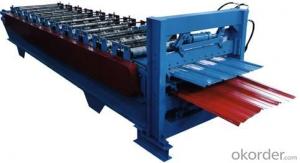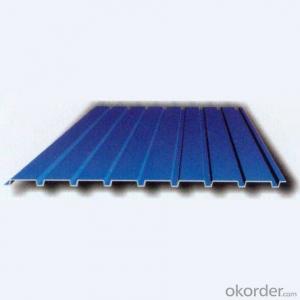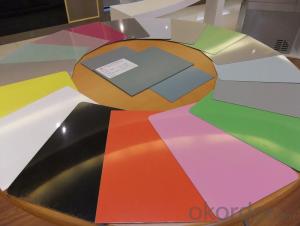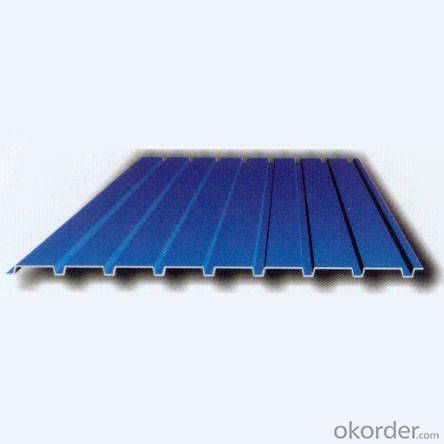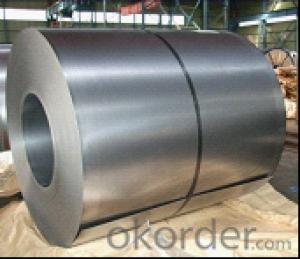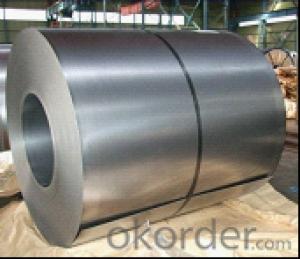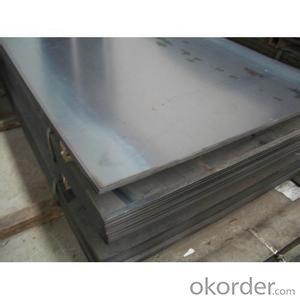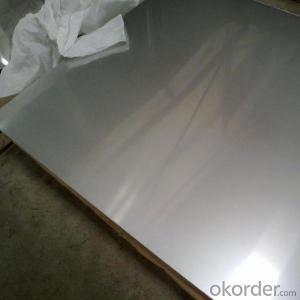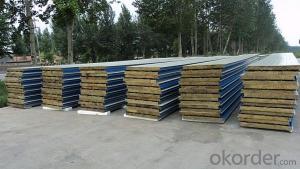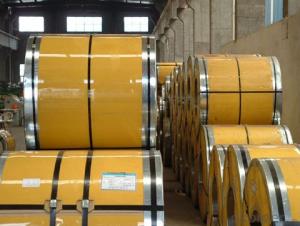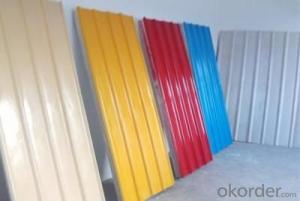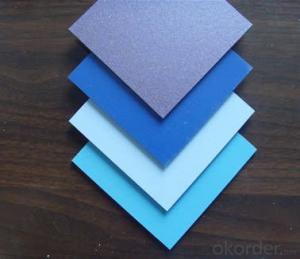PPGL steel sheets
- Loading Port:
- China Main Port
- Payment Terms:
- TT OR LC
- Min Order Qty:
- -
- Supply Capability:
- -
OKorder Service Pledge
Quality Product, Order Online Tracking, Timely Delivery
OKorder Financial Service
Credit Rating, Credit Services, Credit Purchasing
You Might Also Like
Packaging & Delivery
| Packaging Detail: | seaworthy expot package for Corrugated roofing steel |
| Delivery Detail: | on request for Corrugated roofing steel |
Specifications
Corrugated roofing steel
1.10 year's experience
2. advanced coating equipment
3.competitive price
4.various color
- Q: Can steel sheets be used for insulation purposes?
- No, steel sheets are not suitable for insulation purposes as they conduct heat and do not provide any thermal resistance.
- Q: How do steel sheets handle water resistance?
- Steel sheets handle water resistance very well due to their inherent properties. Steel is a non-porous material, meaning it does not absorb water. Additionally, steel sheets are often coated with protective layers, such as galvanized or stainless steel finishes, which provide an extra barrier against water penetration. This makes steel sheets highly resistant to corrosion, rust, and water damage, making them suitable for various applications, including roofing, construction, and marine environments.
- Q: Are steel sheets suitable for automotive body panels?
- Yes, steel sheets are suitable for automotive body panels. Steel is a widely used material in the automotive industry due to its high strength and durability. Steel sheets can withstand the stresses and strains encountered by body panels during vehicle operation, such as impacts, vibrations, and weather conditions. Furthermore, steel can be easily formed into complex shapes, making it an ideal choice for designing various body panel components. Additionally, steel has excellent corrosion resistance properties when properly treated and coated, ensuring the longevity and aesthetics of the vehicle. Overall, steel sheets provide the necessary characteristics required for automotive body panels, making them a suitable choice for manufacturers.
- Q: Can steel sheets be used for manufacturing cutlery?
- No, steel sheets are not typically used for manufacturing cutlery. Cutlery is usually made from stainless steel, which is a specific type of steel that has excellent corrosion resistance and is easy to clean. Steel sheets, on the other hand, are generally used for structural applications such as construction, automotive, or manufacturing industries.
- Q: Are steel sheets suitable for food processing facilities?
- Yes, steel sheets are highly suitable for food processing facilities. Steel is a preferred material for food processing due to its numerous beneficial properties. Firstly, steel sheets are non-porous, meaning they do not absorb or retain moisture, bacteria, or odors, making them highly hygienic. This characteristic prevents the growth of bacteria and minimizes the risk of contamination, ensuring the safety and quality of the food being processed. Secondly, steel sheets are easy to clean and maintain. They can withstand frequent cleaning and sanitization procedures without corroding or degrading. Stainless steel, in particular, is resistant to corrosion, rust, and staining, making it an ideal choice for food processing facilities where cleanliness is of utmost importance. Furthermore, steel sheets have excellent durability and strength, ensuring longevity and reliability in food processing operations. They can withstand heavy use, high temperatures, and mechanical stresses that are common in food processing facilities. Steel sheets also have a high melting point, making them fire-resistant, which is crucial for the safety of the facility. Additionally, steel sheets are versatile and can be fabricated into various shapes and sizes to suit the specific needs of food processing facilities. They can be used for walls, floors, work surfaces, storage units, and equipment, providing a seamless and integrated solution for the facility's infrastructure. In summary, steel sheets are highly suitable for food processing facilities due to their hygienic properties, ease of cleaning, durability, and versatility. They contribute to maintaining a safe and sanitary environment, which is essential for the production of high-quality and uncontaminated food products.
- Q: Can steel sheets be used for soundproofing applications?
- Yes, steel sheets can be used for soundproofing applications. Steel has excellent mass and density, which helps to block and absorb sound waves. When properly installed and combined with other soundproofing materials, steel sheets can effectively reduce noise transmission and improve sound insulation in various applications.
- Q: Are steel sheets suitable for aerospace applications?
- Yes, steel sheets are suitable for aerospace applications. Steel is known for its high strength and durability, making it an excellent choice for structural components in aircraft. It offers good resistance to impact and fatigue, which are crucial factors in the aerospace industry. Additionally, steel sheets can be easily formed and welded, allowing for the creation of complex shapes and structures. However, it is important to note that the specific type of steel and its composition must be carefully selected to meet the specific requirements of the aerospace application, such as weight reduction and corrosion resistance.
- Q: What is the function of an automobile leaf spring?
- Spring: the multi length and unequal curvature of the folded plate. After installation ends naturally curved upward. When the impact force of the wheel face came when the steel plate deformation, play a buffer, damping effect
- Q: Are steel sheets susceptible to rusting?
- Yes, steel sheets are susceptible to rusting if they are not adequately protected or exposed to moisture and oxygen.
- Q: How do steel sheets perform in terms of thermal expansion?
- Steel sheets have a relatively low coefficient of thermal expansion, meaning they expand and contract less than many other materials when exposed to temperature changes. This property makes steel sheets ideal for applications where dimensional stability is crucial, as they are less likely to warp or distort due to thermal fluctuations.
Send your message to us
PPGL steel sheets
- Loading Port:
- China Main Port
- Payment Terms:
- TT OR LC
- Min Order Qty:
- -
- Supply Capability:
- -
OKorder Service Pledge
Quality Product, Order Online Tracking, Timely Delivery
OKorder Financial Service
Credit Rating, Credit Services, Credit Purchasing
Similar products
Hot products
Hot Searches
Related keywords
